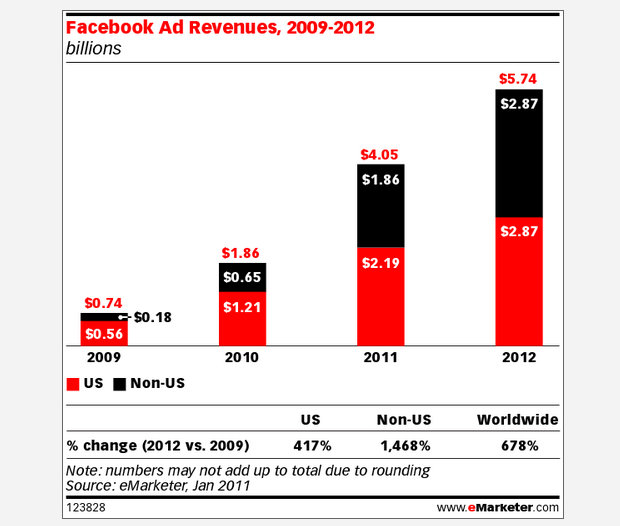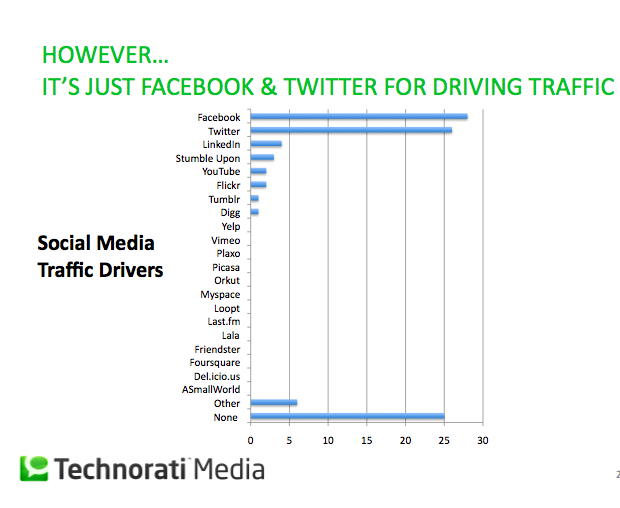Does Facebook valuation indicate that a Tech Bubble is build up?
In the last week we’ve heard quite a few voices claiming that Facebook might be overvalued at $50 billion, and that a new bubble might be forming in tech sector (Here are a two – Economist - http://www.economist.com/economist-asks/facebook_overvalued_50_billion, Bloomberg - http://www.bloomberg.com/news/2011-01-27/facebook-overvalued-at-50-billion-in-global-poll-of-investors.html).
There might be a Tech bubble out there, and I’m probably the last person that might have good  insights on whether such a bubble exists or not, but I do think that adding Facebook to the mix and inferring that Facebook’s is overvalued might be wrong. It could be that there is Tech bubble and Facebook may still be truly worth $50 billion or more and there might not be a bubble and Facebook will still be worth that or much more.
I’m one of strong believers in the notion that Facebook’s Market Cap will quickly reach $100 billion or more, and have been bullish on them for a few years now. Here is why:
Facebook Connect (Social Graph API)
Over 250 million users use Facebook Connect each month. 10,000 sites are adding Facebook Connect each month and a total of over a million websites (including most of the top sites) are leveraging the connect technology today. Soon enough almost any site out there would have a “login with Facebook” option, and Facebook will have a staggering number of impressions outside Facebook.com.
Facebook will be able leverage Facebook Connect to create a huge display and social ad network outside Facebook, adding profile and Social graph to the mix, as well as targeting and retargeting capabilities, to appeal to publisher to allocate more ad inventory to serve effective Social ds.
User reach and campaign innovation
Facebook’s key web metrics, such as Time spent, impressions, Unique visitors, and number of active monthly users are consistently growing and fast, while their main competition’s stats (Google and Yahoo) are either falling or standing still. Soon enough they will be the leader, by far, on any key metric.
Facebook have not yet fully ramped up their ads in Facebook.com and are playing around with new ad units to try to deliver more value to advertisers. For example, the ad product they unveiled this week – Facebook sponsored stories (http://mashable.com/2011/01/25/facebook-sponsored-stories/) is another interesting attempt, a bit like Twitter’s promoted tweets, that might actually work.
Mobile, local and the Facebook platform
Facebook understands the importance of mobile and are heavily investing in it. They already have hundreds of millions of mobile users and coupled with a local strategy they will be a serious force in the mobile ad space.
On top of that Facebook is pushing hard on other initiatives on their platform, such virtual currency and e-commerce. Their platform partners, such as Zynga, are virtually printing money today and it’s just a matter of time until Facebook figures out the right angle to claim their share of the revenues partners make on the platform. I feel we can expect them to create a steady and decent revenue stream from those initiatives.
Finally, it seems that Social is an inherit layer in anything that is Web or Mobile, and that Facebook will dominate this space. If Social is everywhere and Facebook is Social, Facebook will be everywhere, just like Google is everywhere today. I would not be blown off my feet if two years from now Facebook and Google will be head-to-head in terms of Market Cap.
Update (2/27):
emarketer.com has recently published a forecast of Facebook ad revenues, expecting it to hit ~$4 Billion in 2011.



